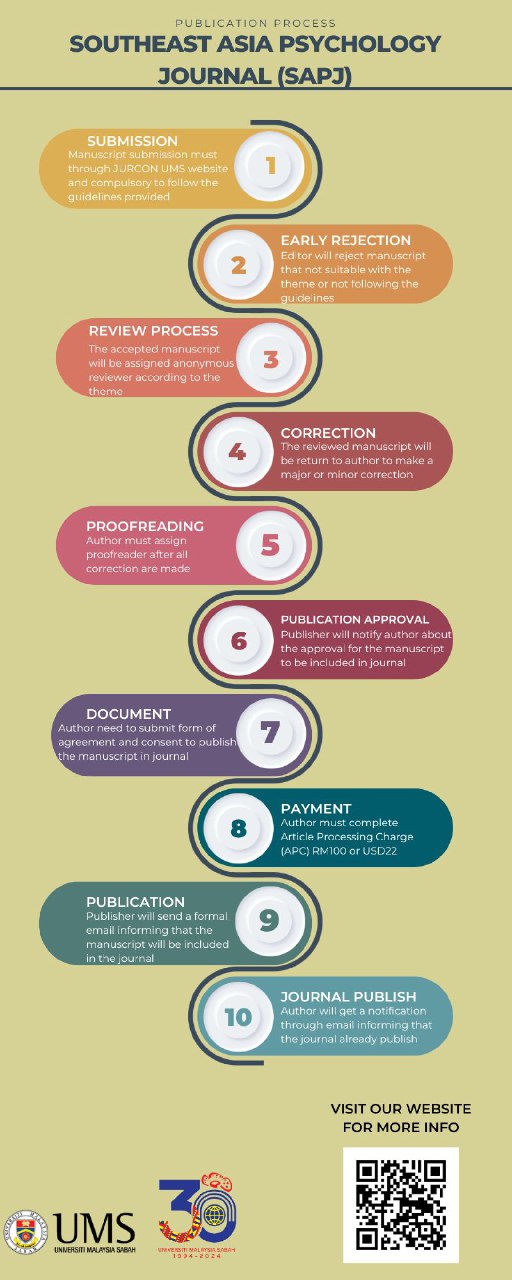SUPERVISORS’ CONFLICT RESOLUTION STRATEGIES: THE MISSING LINK BETWEEN CONFLICT TYPES AND EMPLOYEES’ BEHAVIORS
DOI:
https://doi.org/10.51200/sapj.v7i1.5168Keywords:
Conflict Types, Conflict Resolution Strategies & Employees’ BehaviorAbstract
Conflict is inevitable in the workplace. Studies found conflicts in the workplace tend to contribute negative effects on employees’ positive behaviors. However, conflict is not always bad, it depends on the conflict types and the conflict resolution strategies. In this conceptual paper, the missing picture of the relationship between conflicts, conflict resolution strategies, and employees’ positive behaviors will be discussed. Understanding the relationship between these variables enables us to have a better knowledge of how the conflict affects employee behaviors. And, the knowledge will benefit industrial and organizational psychologist, workplace counselors and human resource manager.
References
Hofstede, G. (2001). Culture's Consequences: Comparing Values, Behaviors, Institutions and Organizations across Nations. Thousand Oaks, CA: Sage. Hofstede, G. & Hofstede, G. J. (2005). Cultures and Organizations: Software of the Mind (Rev. 2nd ed.). New York: McGraw-Hill. Jehn, K. A. (1994). Enhancing effectiveness: An investigation of advantages and disadvantages of value-based intragroup conflict. International Journal of Conflict Management, 5, 223–238. Jehn, K. A., & Mannix, E. A. (2001). The dynamic nature of conflict: A longitudinal study of intragroup conflict and group performance. Academic of Management Journal. 44(2): 238-251. Komarraju, M., Dollinger, S. J., & Lovell, J. L. (2008). Individualism-collectivism in horizontal and vertical directions as predictors of conflict management styles. International Journal of Conflict Management 19 (1), 20-35. Marques, F., Lourenco, P. R., Dimas, I. D., & Rebelo, T. (2015). The relationship between types of conflict, conflict handling strategies and group effectiveness. Journal of Spatial and Organizational Dynamics. 3(1):58-77. Nemeth, C. (1995). Dissent as driving cognition, attitudes and judgments. Social Cognition, 13, 273-291. Penney, L. M., & Spector, P. E. (2005). Job stress, incivility, and counterproductive work behavior (cwb): The moderating role of negative affectivity. Journal of Organizational Behaviour. 26(7): 777-796. Rahim, M. A. (1983). A measure of styles of handing interpersonal conflict. Academy of Management Journal, 26, 368-376. Rahim, M. A. (2011). Managing Conflict in Organisation. (4th ed). New Jersey: Transaction Publishers. Rahim, M. A., Magner, N. R., & Shapiro, D. L. (2000). Do justice perceptions influence styles of handling conflict with supervisor? What justice perceptions, precisely? International Journal of Conflict Management, 11, 5–26. Salami, S. O. (2009). Conflict resolution strategies and organisational citizenship behaviour: The moderating role of trait emotional intelligence. Europe’s Journal of Psychology. 2: 41-63. Salami, S. O. (2010). Job stress and counterproductive work behaviour: Negative affectivity as a moderator. The Social Sciences. 5(6): 486-492.








